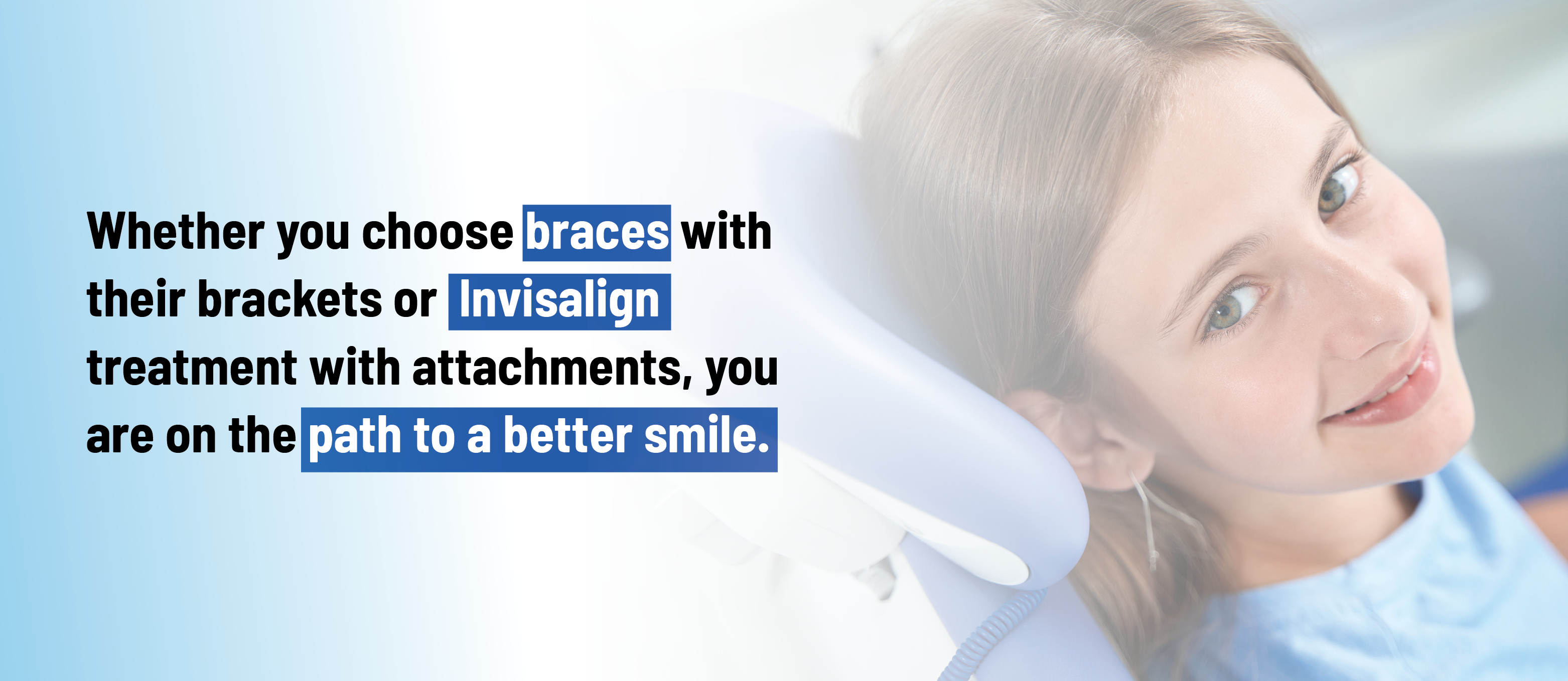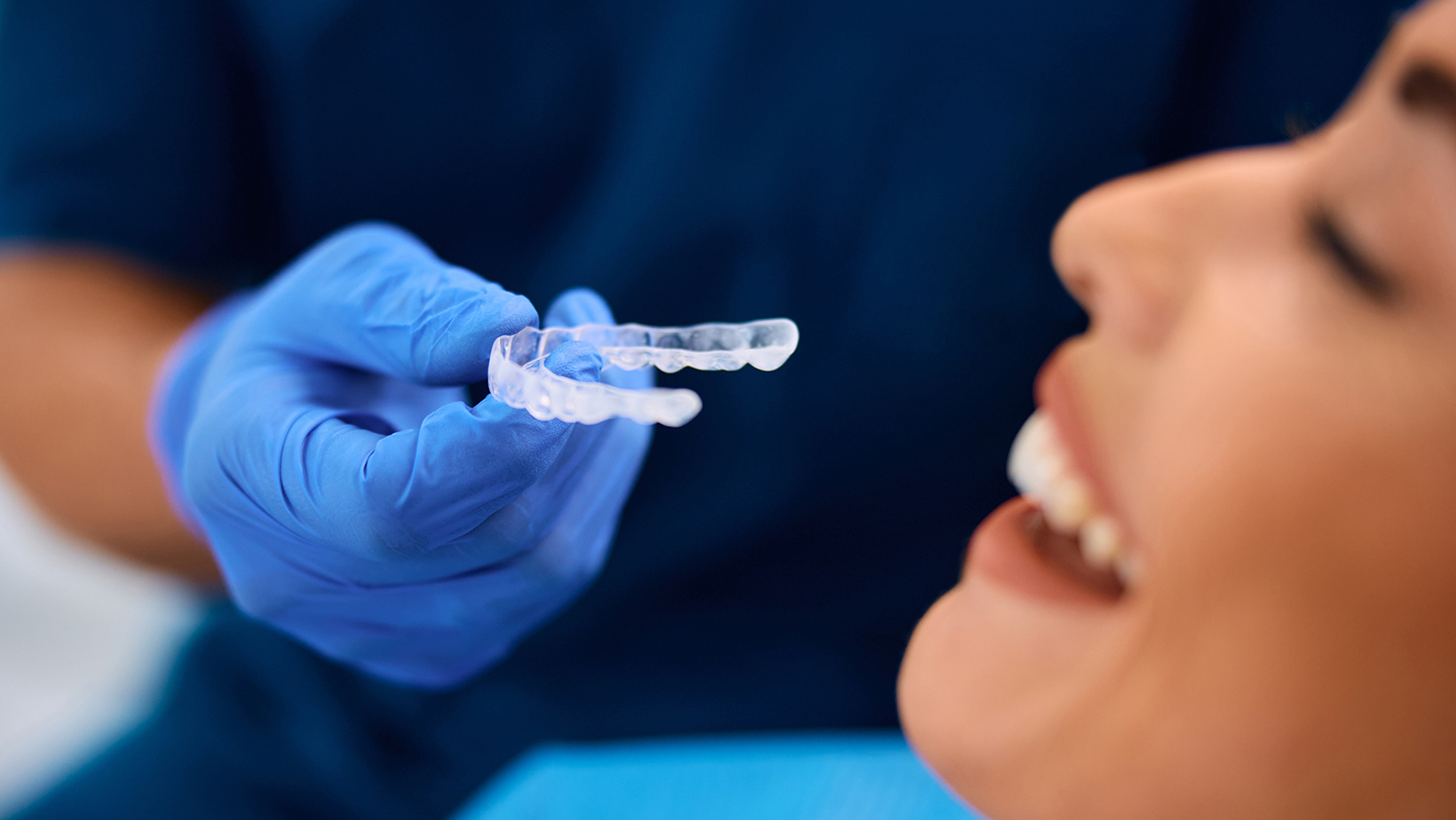When you are looking into options for straightening your or your child’s teeth, Invisalign is a popular choice. If you don’t know much about the treatment yet, maybe you are curious about how it compares to other orthodontic options, like braces. For instance, you might have wondered, “Does Invisalign use brackets?” This is a common question, but it’s based on a misunderstanding. Let’s clear up the confusion and answer the important questions you have about Invisalign.
What Are Brackets?
Brackets are small metal or ceramic pieces that stick to each tooth when a patient gets traditional braces. They work with wires to move the teeth into the right position. But here’s the thing: Invisalign does not use brackets at all. Instead, Invisalign uses clear plastic trays, called aligners, to straighten teeth. The trays are molded from digital images taken of the patient’s teeth. A lab uses these images to create a series of removable plastic aligners, custom made to fit over teeth.
Invisalign progressively adjusts crooked teeth without using brackets and metal wires. This is one of the main reasons people choose Invisalign—the trays are nearly invisible!
So, Why Do People Talk About Invisalign Brackets?
Even though Invisalign does not use brackets, some people still use the term “brackets” when asking questions about Invisalign. They might be talking about the aligners themselves or about something called “attachments.”
Also called buttons, Invisalign attachments are small, tooth-colored bumps that the dentist places on the teeth to help the aligners fit better and move the teeth more effectively. These are not brackets, but they are cemented to the patient’s teeth during treatment. The good news is that, unlike brackets, attachments are small and made from tooth-colored material. They are practically invisible (especially when used on back teeth).
Attachments are specifically designed to fit each patient’s teeth and are placed in precise spots to direct tooth movement. They work like handles, allowing the aligners to apply gentle pressure, helping the dentist or orthodontist to precisely target areas where the aligners need to work.
Not every patient needs Invisalign attachments. And, the number of attachments used on each patient depends on the specifics of their orthodontic issues. Some patients need just a few attachments while others need them on every tooth.
Now, let’s answer some of those common questions about “Invisalign brackets.”

Question: How Are Invisalign Brackets Put On?
What people mean: How are Invisalign attachments put on?
The answer: Invisalign attachments are bonded to the patient’s teeth using a tooth-colored dental adhesive. First, the dentist will clean and prepare the surface of the teeth where the attachments will be placed. Then, they apply a small amount of adhesive to the attachment and carefully position it on the tooth. Once in place, the dentist uses a special light to harden the adhesive for a strong bond. The process is quick, painless, and ensures the attachment stays in place throughout the Invisalign treatment.
Question: Do Invisalign Brackets Hurt?
What people mean: Do Invisalign trays hurt?
The answer: Though the process of applying Invisalign buttons is painless, patients may experience some mild pressure or soreness once they put on a tray and their teeth start to move. This usually gets better during the first few weeks after starting treatment, and for the first couple of days after each set of aligners is started.
Luckily, there are some tried and true methods for reducing discomfort associated with new Invisalign trays.
Question: What if Invisalign Brackets Fall Off?
What people mean: What if Invisalign Attachments Fall Off?
The answer: Though it is rare, sometimes an attachment becomes loose or is dislodged during treatment. If this happens, it is important to contact the orthodontist as soon as possible. While a missing attachment might not seem like a big deal, it can affect the way the aligners fit and how well the teeth move. Your orthodontist will usually schedule an appointment to reattach the missing piece.
Similarly, if a patient loses an Invisalign tray, it is important to contact the dentist right away to determine next steps for uninterrupted treatment.
Question: Do Brackets Get Removed After Invisalign?
What people mean: Do attachments or buttons get removed after Invisalign?
The answer: Yes, attachments or buttons are removed by the dentist or orthodontist when Invisalign treatment is complete. The dentist has special tools to take them off carefully so they will not cause discomfort or damage teeth. Once the attachments are gone, the patient can enjoy a new, straight smile without anything extra on their teeth.
Question: How Do You Get Invisalign Brackets Off?
What people mean: How do you remove Invisalign attachments?
The answer: You shouldn’t try to remove Invisalign attachments yourself. Your dentist will do this for you when your treatment is complete. They have the tools and experience to remove the attachments safely and comfortably.
Question: Can You Use Whitening Strips with Invisalign Brackets?
What people mean: Can you use whitening strips with Invisalign trays?
The answer: There are a few things you can and cannot do while wearing Invisalign trays, and using whitening strips is one of them. Whitening strips need to be in direct contact with the patient’s teeth, but the trays will block them. It is best to discuss whitening options with the dentist. They can advise about the best time to do it, which is usually before or after Invisalign treatment.
From Brackets to Attachments: The Path to a Perfect Smile
Whether you choose braces with their brackets or Invisalign treatment with attachments, you are on the path to a better smile. Now that you know the difference, you can ask the right questions and get the answers you need to make the best decision for you or your child.
Reach out to one of our qualified dentists today to learn if Invisalign is right for you.


